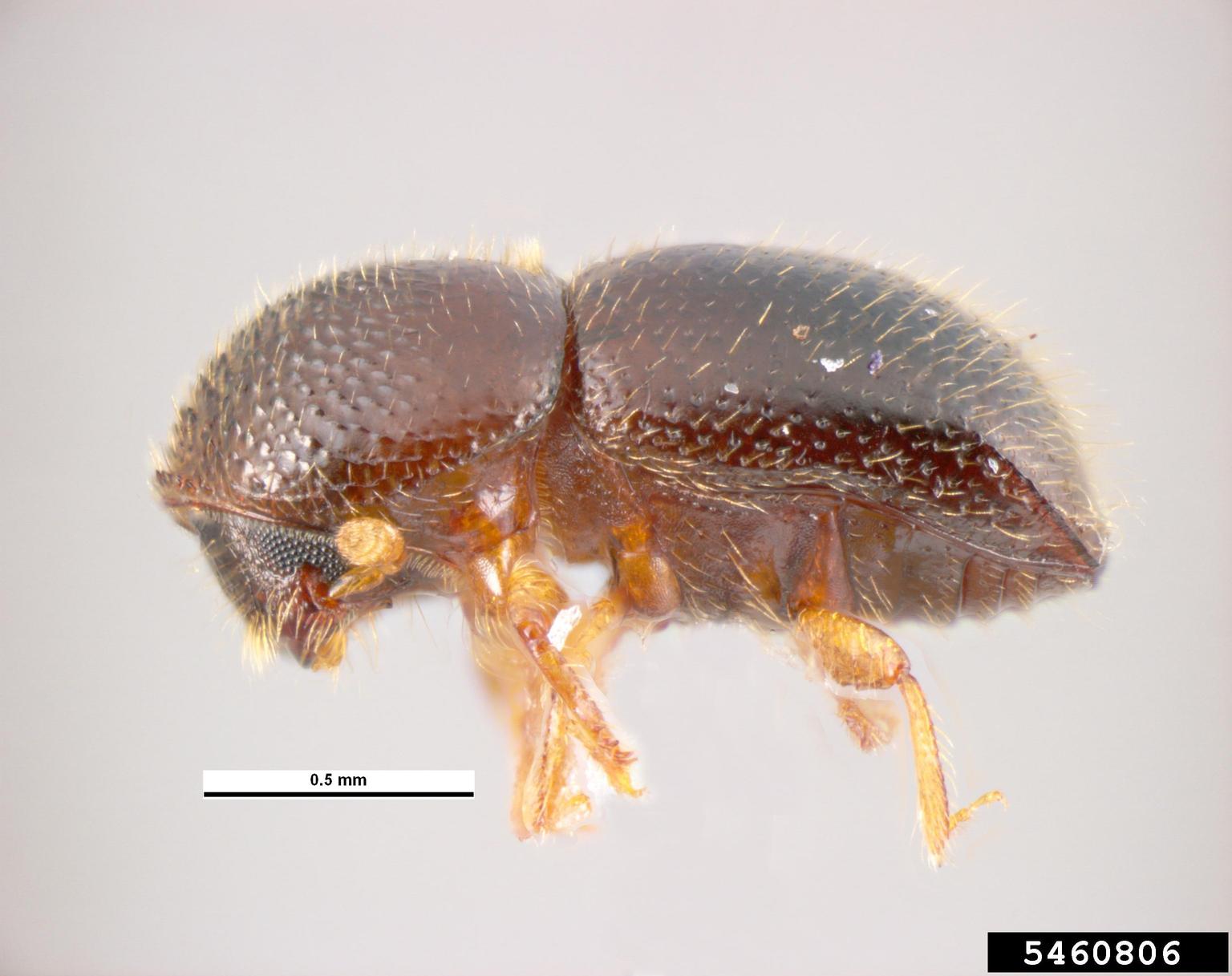If our plants did not have enough with the native pests of each area, and with the invasive ones such as the red weevil or the Paysandisia archon, now they have to deal with another one: the Xylosandrus compactus. This scientific name probably doesn’t ring a bell, but it’s the one given to a potentially dangerous beetle for around 225 different species, including trees and shrubs.
Considering how dangerous it is, we are going to tell you about this borer beetle so that you can recognize it, and take preventive measures that are necessary in order to avoid causing too many problems to your crops.
What is the origin and characteristics of the Xylosandrus compactus?


Image – Pest and Diseases Image Library, Bugwood.org
It is an insect native to tropical Africa, Madagascar, and south-southeast Asia. At present, it is also found in the United States, where it was introduced in 1941, in Brazil, Cuba and Hawaii, as well as in Mallorca (Spain) where it arrived in November 2019, although it was already known in the French Bank. since at least 2012. It is popularly known as a black coffee borer, black coffee branch borer, tea stem borer, or black twig borer.
Regarding its characteristics, we speak of a relatively small dark brown or black insect. The adult female is only 2mm long, and about 1mm wide. The head is convex in shape, and has antennae composed of several segments. Its pronotum, that is, the first part of the thorax, has a front border with six or eight striae. In addition, it has wings called elytra.
On the other hand, the adult male is smaller, its pronotum is not serrated and it does not have wings.
The eggs are approximately 0,5mm long, and are ovoid, white in color. The larvae emerge from them, creamy white with a brownish head and no legs. The pupae are cream coloredand have legs that they use to move.
What is its biological cycle?
Knowing the biological cycle of a species of insects like this, invasive and with the capacity to put so many plants at risk, turns out to be of great importance, since the success or failure of the treatment will largely depend on it:
- Eggs: they are deposited on previously perforated branches.
- Larvae: once they hatch from the egg, they begin to feed.
- Pupae: The males are produced from unfertilized eggs and are few, but they eventually mate with their sisters. They will never get out of those tunnels.
- Adults: the adult female beetle leaves the tunnel and flies towards another host tree…, but it does not go alone: this species of insect has established symbiotic relationships with some fungi, such as Fusarium. These microorganisms colonize the xylem from the host plant, and will then be consumed by beetles and larvae. But how do they get there? In spore form carried by the female beetle.
The life expectancy of this insect is about 30 days on average. The female can reach 40 days, and the male around 7-10 days.
What plants does the Xylosandrus compactus?
It is known that affects about 225 plant speciesdistributed in 62 botanical families. For example, it causes serious damage to the Coffea arabica (coffee), Camellia (the), Persea americana (avocado) and theobroma cacao (cacao), but it also affects erythrina, Melia sourach, Maple palmate, home grandifolia y Khaya senegalensisamong many others.
Un study showed that those plants that did NOT exude a large amount of sap, regardless of the stress to which they were subjected, had less risk of being hosts of the tree-boring beetle.
What damage does it cause?


Image – Chazz Hesselein, Alabama Cooperative Extension System, Bugwood.org
The Xylosandrus compactus It is an insect that digs galleries, especially in young branches of trees, where it houses the fungi with which it has symbiotic relationships and that it cultivates in order to serve as food for both itself and the larvae.
An affected plant will therefore have these symptoms:
- Death and fall of branches
- Brown leaves
- Flower abortion
- Growth arrest
How is the control of the Xylosandrus compactus?
When the first symptoms are detected, the measure that is taken is to treat the affected plant with endotherapy (that is, injecting the phytosanitary product and / or nutritional substance directly into the vascular tissue), but if you have a large number of infested plants in a greenhouse for example or in a closed place, and they are very bad, we proceed to burn them.
Según un study, the mushroom Beauveria bassiana it could be a good non-toxic remedy against this pest. But in any case, The first thing you have to do if you suspect that you have a tree with this problem is to notify the Plant Health of your locality.
When did you arrive in Spain?
The branch-boring beetle arrived in Spain in November 2019. It was detected in a carob tree (Ceratonia siliqua) who lives in a private garden of a neighbor in Calvià (Mallorca). Technicians from the Balearic Islands Plant Health Laboratory (LOSVIB) and the University of the Balearic Islands (UIB) made the finding known to the General Sub-Directorate for Plant and Forest Health and Hygiene of the Ministry of Agriculture, Fisheries and Food.
The LOSVIB technicians put an endotherapy treatment on the carob tree, and they follow up every six months.
We hope it has been useful to you.


